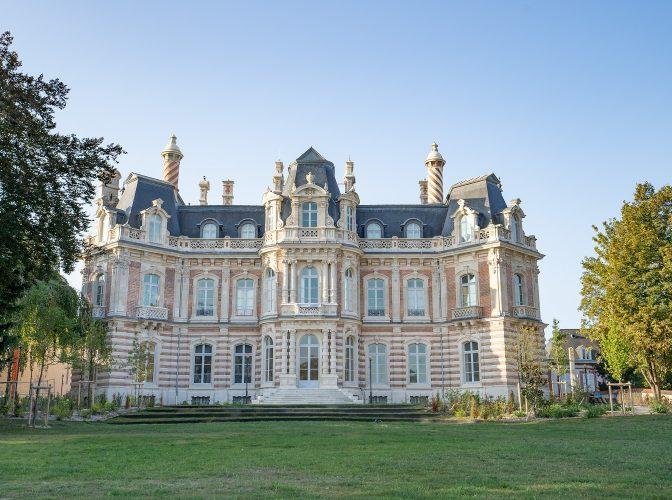
На сайте используются cookie файлы
The site uses cookie files
Данный сайт имеет возрастное ограничение!
This site has age restrictions!
Я подтверждаю, что мне, увы, уже давно исполнилось 18 лет
Several times postponed due to the Covid, the very first opening of the Museum of Champagne wine and regional archaeology should delight inhabitants of Épernay on Saturday, May 29 with a course built around an original common thread: chalk.
While everything was ready at the end of last year, the Musée du vin de Champagne et d’Archéologie régionale d’Épernay will finally open its doors on May 29. The place is simply magical. Housed in the former residence of Charles Perrier, built in a neo-Louis XIII style in 1855 and opening view onto an English garden, it alone embodies the luxury and excessiveness of champagne. The renovation required a trifle of 23 million euros.
On the ground floor, the reception rooms, which notably include the ballroom, do not accommodate any display cases. They will house future events, conferences and exhibitions which should once again make the château a major center for the cultural life of champagne.
The museum is broken down into three groups, linked by an original common thread: chalk. The route begins with the rooms devoted to geology. Champagne wine lovers know that their extraordinary minerality owes a lot to the chalk of Campanian and Turonian. The reconstruction of a Lutetian beach discovered in Fleury-la-Rivière allows us to understand the genesis of this wonderful terroir.
The second pole focuses on archeology. Chalk has indeed conservative virtues which probably explains why the Marne is one of the departments that has provided the most prehistoric remains. Virtual reality headsets offer the opportunity to discover the interior of a hypogeum, a cave dug out of chalk that was used as a tomb in the Neolithic period.
The third pole focuses on the wine of Champagne itself. It opens with an evocation of the role of the Church and the monasteries in its development. A digital terminal allows you to leaf through the evangeliary of Ebbon, a relic of those medieval times when the Abbey of Hautvillers was as renowned for its hillsides as for the quality of its copyist workshop.
After this very suggestive introduction, we enter technical history. The circuit is not often satisfied with an alignment of traditional tools. The use of old photographs sheds light on their operation, and the presence of models of current machines prevents champagne from falling into folklore. With some, like the stirring machine, the visitor can carry out the manipulations themselves.
An opening onto the imagination of champagne
Champagne is more than just a product. It is also quite an imagination, an art of living. A special room is dedicated to this dimension with screenings of extracts from films such as “Marie Antoinette” by Sofia Coppola or the contemplation of the famous “Oyster lunch”, one of the first paintings representing champagne, when the devil’s wine was first a curiosity that had to be served from very high to better enjoy the spectacle of its foam.
We will finally linger with delight on all these objects of the champagne service, unfortunately forgotten, but sometimes very ingenious: the siphon with champagne, the glass coolers, not to mention the flute with rice grains whose patterns served to mask the cloudiness of the liquid, while we had not yet mastered the technique of riddling.
The people of Champagne have constantly traveled the planet to become ambassadors of the divine bubble. They did not come back unscathed. Some have built up magnificent collections of artistic objects of all kinds brought back from their journeys. They must be placed in the context of the fashion for collecting, very widespread in the bourgeoisie of the nineteenth century, marked by romanticism and dreams of travel. Bequeathed by great local notables such as Claude Chandon de Briailles or the diplomat Jules Claine, they form a sort of cabinet of curiosities and a beautiful conclusion for this course dedicated to the world of champagne, emphasizing that the success of this wine region is the result of, first of all, its openness to the world.
Based on the materials of Terre de Vins